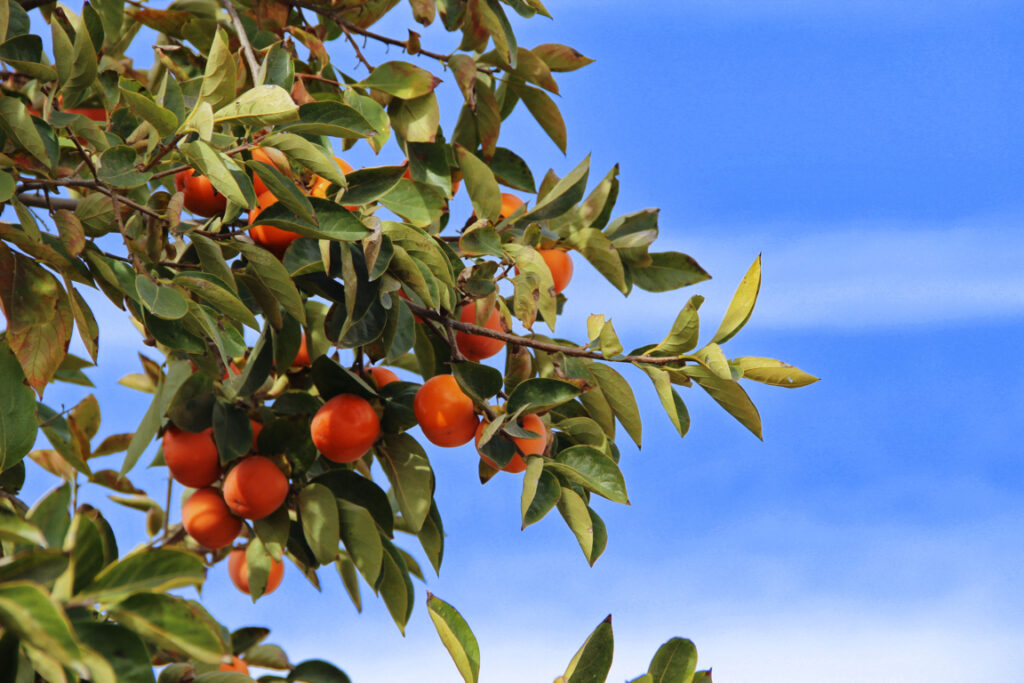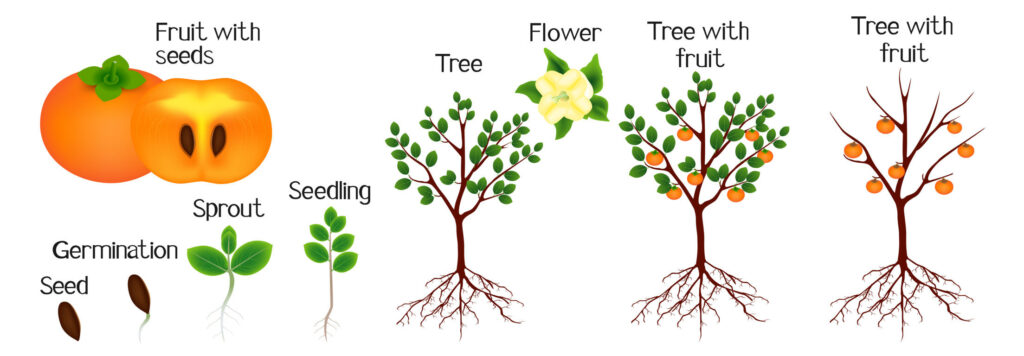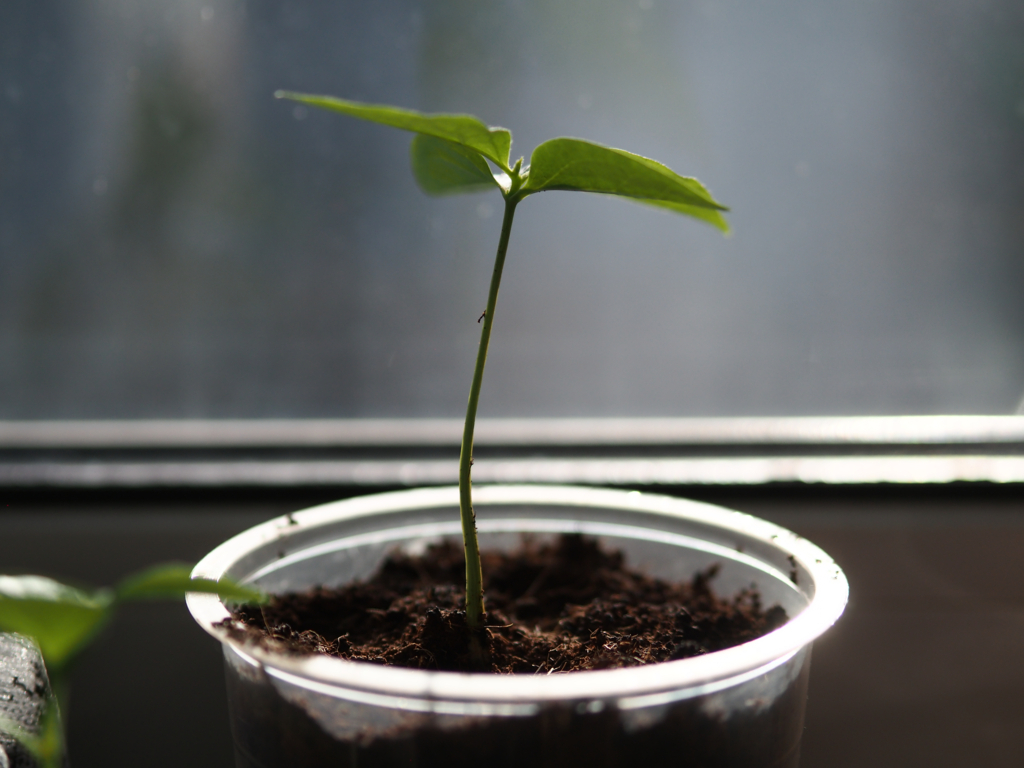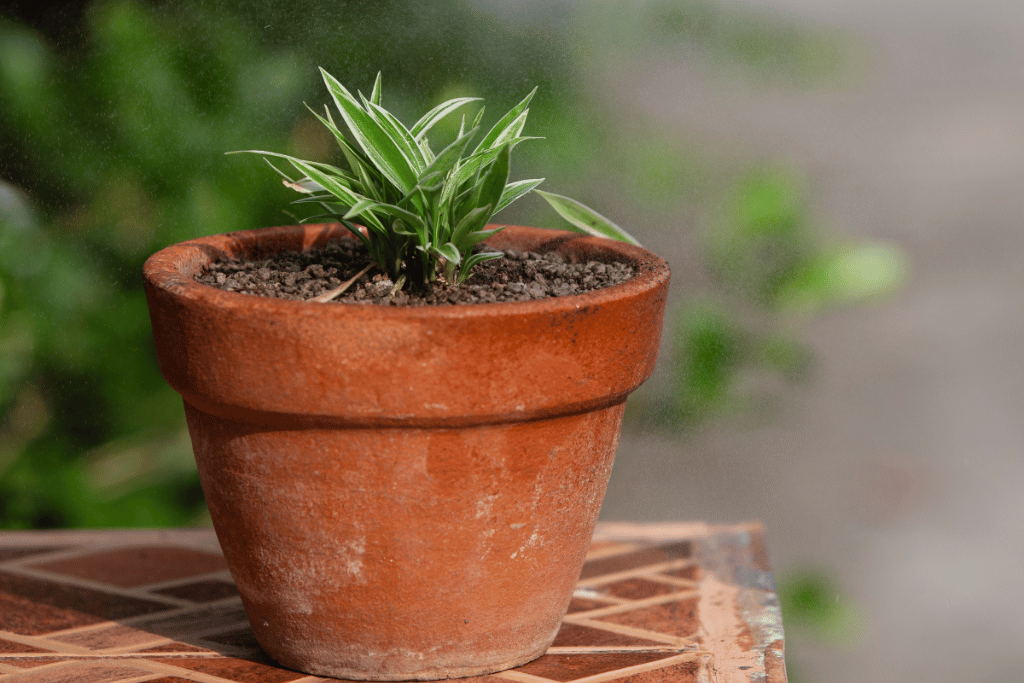
Growing a persimmon tree from seed is a satisfying and economical way of producing your own fruit, right in your backyard. There’s nothing quite like harvesting your very own sun-ripened, sweet and juicy fruit.
If you’ve decided to grow a persimmon tree, this guide will walk you through all the steps from beginning to end.
How to Grow a Persimmon Tree From Seed

In this article, we will discuss how to select the right seeds, how to prepare and plant the seeds, how to care for your persimmon and how long it will take for the tree to produce fruit.
1. Selecting the right seeds
Persimmon trees are deciduous fruit trees native to North America, China, and Japan. When choosing the seeds, you should look for them to be plump, dark brown, or reddish in color, and slightly soft to the touch. Avoid using seeds with holes or cracks, as they may not germinate properly.
So, now you can grab a fresh persimmon and take the seeds out, then soak them in a glass of warm water for a few days. This will remove any flesh that’s stuck to the seed.
2. Cold stratification
The next step is to allow your seeds to undergo cold stratification, which will help them germinate. Cold stratification involves exposing the seeds to temperatures below 40°F for a period of time to mimic the winter months the seeds would experience in the wild. You can do this by placing your persimmon seeds in a plastic bag and storing it outside during winter, or in the refrigerator for several weeks.
3. Preparing the soil
Once your seeds have undergone cold stratification, it’s time to prepare the soil for them. Take a pot or a seedling tray and fill it with high-quality loam soil. Ensure the soil is well-draining and free of weed seeds or debris.
Speaking of weed, to ensure a healthy persimmon tree, you should mulch around the base with organic material such as straw or grass clippings. This will help to retain moisture and keep weeds away.
4. Planting the seeds
Now it’s time for planting! Plant each seed two inches deep in the soil and lightly press the soil down so it’s secure around the seed.

Tip: The best time to plant is in the late spring or early summer. This gives the seed enough time to establish itself and the roots to become well-developed by fall. Planting should occur after all danger of frost has passed, when temperatures are consistently over 70 degrees Fahrenheit.
5. Move to a sunny place
Persimmon seeds will need sunlight to germinate, so move the container to a warm and bright location. Ensure that the temperature isn’t too hot; around 70 degrees Fahrenheit is perfect. A warm temperature will help to germinate the seeds.
6. Wait for your seeds to germinate
It generally takes six weeks for persimmon seeds to germinate and show signs of growth.
7. Transplant
This is the most crucial step in getting your persimmon trees off to a good start, so make sure to do it right. After a few weeks, you will notice that the seedlings are ready for transplantation. Move them into larger plant pots so they have more space and nutrients.
To transplant, water your seedling well and wait for the soil to dry slightly. Now, gently remove the seedling from its pot, not damaging the roots. Once done, place it into a larger pot or planter filled with fresh potting mix.
Lightly press down the soil around the plant and water it well. Lastly, put the plant in a sunny spot and water routinely to keep the soil moist, but not soggy.
Tip: Since persimmon trees have an extensive root system, you’ll need to transplant them again after 3 years – from the pot to your yard. Make sure you do this in early spring when frosty days have passed. Simply dig a hole in the ground and plant your persimmon in. Cover it nicely and ensure there is enough space for the root system to grow.
8. Caring for your new tree
Once you have transplanted your persimmon tree, it’s time to provide it with proper care and attention. Place the container in an area that receives direct sunlight for at least 6 hours per day and water weekly.
Make sure the planting site does not have any standing water, as this can cause root rot.
Apart from that, when planting a persimmon seed, it is best to do so in well-draining, slightly acidic soil with a pH of 6.5–7.0.
9. Pointers to keep in mind
Make sure the planting site does not have any standing water, as this can cause root rot.
Apart from that, when planting a persimmon seed, it is best to do so in well-draining, slightly acidic soil with a pH of 6.5–7.0.
10. Pruning
Pruning is an integral part of caring for your persimmon tree. Start off by pruning the tops of the young tree when it reaches about 3 feet tall. This will help to encourage a strong, healthy structure by allowing you to shape the tree into one with three or four main scaffold limbs spaced evenly around the trunk and about a foot apart vertically.
When making pruning cuts, always do so at the branch collar (the area of raised tissue where a branch meets the trunk or a larger limb) or just above a bud that is growing in the desired direction. Remove dead, crossing, and weak limbs as needed to maintain an open canopy of foliage for adequate light penetration.
Lastly, thin out new shoots in late summer to help reduce overcrowding and allow more air flow throughout the tree’s branches.
Tip: Prune in early spring or late winter since the plant is dormant.
11. Harvesting
Once your persimmon tree has grown and produced fruit, you can start harvesting them. Persimmons are ripe when they turn slightly soft to the touch and develop a bright orange hue.
Remember that a persimmon tree can take five to seven years before it starts bearing fruit. Once established, a single tree can produce up to 100 pounds of fruit in one season.
That’s all there is to know about how to grow a persimmon from seed.
Conclusion
We hope this guide on how to grow a persimmon tree from seed has been helpful to you. With the right knowledge and environmental conditions, it is possible to grow a healthy persimmon tree from seed. So, what are you waiting for? Plant your persimmon tree today!
Frequently Asked Questions (FAQ)
How many varieties of persimmon are there?
There are two main varieties of persimmon trees: Diospyros kaki, commonly known as the Asian or Japanese persimmon, and Diospyros virginiana, otherwise known as the American persimmon. Both varieties produce edible fruit and have similar growth habits, although they differ in size and shape of the fruit produced.
What is the best way to harvest persimmons?
The best time to harvest persimmons is when they are fully ripe and have a deep orange color. Gently twist the fruit off of the tree or clip it with pruning shears. Try to avoid pulling the fruit off of the branch, as this may cause damage to the tree. It is essential to harvest persimmons soon after they are ripe as they can spoil quickly.
What nutrients do persimmon trees need to grow well?
Persimmon trees require regular fertilization to grow well and produce abundant fruit crops. It is important to use a fertilizer rich in nitrogen, phosphorus, and potassium to ensure that the tree has all the essential nutrients it needs. Moreover, persimmon trees benefit from regular compost or other organic matter applications to help improve soil fertility.
Are there any diseases or pests I should look out for when growing a persimmon tree?
Unfortunately, yes. Certain types of mites and aphids can attack persimmon trees, while fungal diseases like leaf spot, crown rot, and root rot can also be a problem. Inspecting your tree regularly for signs of disease and pest infestations is important. If any are detected, address them quickly to minimize damage to the tree.
In addition to that, using organic methods such as mulching and crop rotation can help prevent many of these issues.
How long to grow persimmon from seed?
You must be eager to know how long does the persimmon take to grow from seed. Generally, it takes about two to three years for a persimmon tree to reach full maturity, and about six years to bear fruit. However, it is not uncommon for some trees to take longer depending on the variety and how well they are cared for.



